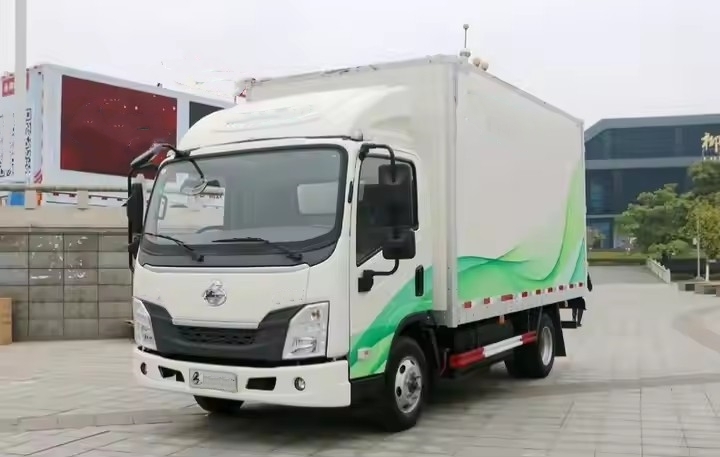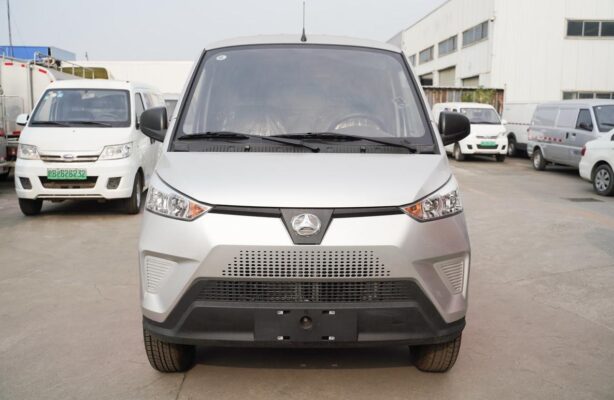Electric Truck Knowledge
Circuit Protection in Electric Powertrains of New Energy Vehicles
Abstract
With the rapid advancement of new energy vehicle (NEV) technology, the safety and reliability of electrical power systems have become critical concerns. This paper explores circuit protection mechanisms in NEVs, including battery management systems (BMS), power transmission lines, power management, motor controllers, and high-voltage DC circuits. By analyzing various protection strategies such as overcurrent protection, short-circuit protection, insulation monitoring, and thermal management, this paper aims to provide an in-depth understanding of safeguarding NEV electrical architectures.
1. Introduction
As electric vehicles (EVs) become increasingly prevalent, ensuring the safety and efficiency of their electrical powertrains is paramount. High-voltage components and complex power electronics introduce new challenges in circuit protection. The failure of these components can lead to catastrophic consequences, including fire hazards and system malfunctions. Therefore, proper circuit protection strategies must be implemented to ensure operational safety and longevity.
2. Battery Management System (BMS) Protection
The battery is the core energy source of NEVs, requiring sophisticated protection mechanisms to prevent hazardous failures. Key circuit protection measures in BMS include:
2.1 Overcurrent and Overvoltage Protection
Lithium-ion batteries are highly sensitive to overvoltage and overcurrent conditions. Excessive current flow can cause overheating, leading to thermal runaway. To prevent this, BMS integrates electronic fuses, relays, and current sensors to detect and mitigate abnormal current conditions.
2.2 Short-Circuit Protection
A short circuit within the battery pack can cause rapid temperature rise and potential explosion. Protection devices such as high-speed fuses and circuit breakers are implemented to immediately disconnect faulty circuits.
2.3 Thermal Management and Overtemperature Protection
Temperature sensors embedded within battery modules monitor heat levels. If excessive temperatures are detected, the BMS can activate cooling systems or shut down the affected cells to prevent overheating.
2.4 Insulation Monitoring
To prevent leakage currents and high-voltage faults, insulation monitoring devices continuously assess insulation resistance and issue warnings if deterioration is detected.
3. Power Transmission Line Protection
High-voltage power cables are responsible for delivering electrical energy between the battery, inverter, and motor. Circuit protection strategies include:
3.1 Overcurrent Protection
High-voltage relays and fuses are installed to disconnect circuits when abnormal current spikes occur, preventing cable overheating and damage.
3.2 Ground Fault Detection
Ground faults can cause unintended current leakage, posing a safety risk. Insulation monitoring devices detect ground faults and trigger protective shutdowns if needed.
3.3 Electromagnetic Interference (EMI) Protection
Power transmission lines can generate electromagnetic interference, affecting surrounding electronic components. Shielded cables and ferrite cores are used to minimize EMI effects.
4. Power Management System Protection
The power management system distributes energy to various vehicle components and requires robust protection mechanisms.
4.1 Voltage Regulation Protection
DC-DC converters and onboard chargers require stable voltage levels. Protection circuits prevent voltage fluctuations that could damage sensitive electronic components.
4.2 Reverse Polarity Protection
To safeguard against incorrect battery connections, diodes and MOSFET-based circuits prevent reverse current flow.
4.3 Surge Protection
Voltage surges caused by regenerative braking or sudden load changes can damage electronic components. Surge suppressors and transient voltage suppressors (TVS) are employed to absorb excessive energy.
5. Motor Controller Protection
The motor controller regulates power delivery to the electric motor. Key protection strategies include:
5.1 Overcurrent and Overvoltage Protection
Excessive current can damage power transistors in the motor inverter. Fast-acting circuit breakers and electronic fuses prevent overcurrent conditions.
5.2 Short-Circuit Protection
Short circuits in the motor drive can cause severe damage. Insulated Gate Bipolar Transistors (IGBTs) and Metal-Oxide-Semiconductor Field-Effect Transistors (MOSFETs) are equipped with fault detection mechanisms to prevent such failures.
5.3 Thermal Protection
Temperature sensors continuously monitor heat generation in the inverter and motor windings. If overheating is detected, active cooling systems or power derating strategies are implemented.
6. High-Voltage DC Circuit Protection
High-voltage DC circuits require specialized protection due to their unique failure characteristics.
6.1 Arc Fault Protection
High-voltage DC circuits are prone to arc faults, which can cause severe damage and fire hazards. Arc fault detection systems identify irregularities and disconnect circuits before damage occurs.
6.2 Leakage Current Protection
Leakage currents can pose electrocution risks. Residual current detection devices (RCDs) detect leakage currents and disconnect circuits if thresholds are exceeded.
6.3 Isolation Protection
High-voltage isolation barriers ensure that dangerous voltages do not reach low-voltage control systems. Galvanic isolation techniques using transformers and optocouplers provide necessary separation.
7. Advanced Protection Technologies
The continuous development of NEVs introduces advanced protection mechanisms:
7.1 AI-Based Predictive Protection
Artificial intelligence and machine learning algorithms analyze operational data to predict potential failures before they occur, enabling proactive circuit protection.
7.2 Solid-State Circuit Breakers
Traditional mechanical breakers are being replaced by solid-state circuit breakers, offering faster response times and enhanced reliability.
7.3 Wireless Protection Systems
Wireless sensors and IoT-based protection systems enable real-time monitoring and remote fault diagnosis, improving safety and efficiency.
8. Xelasî
The complexity of NEV electrical architectures necessitates robust circuit protection strategies to ensure safety and reliability. By implementing comprehensive protection mechanisms, including overcurrent protection, thermal management, insulation monitoring, and advanced AI-driven fault detection, the risks associated with high-voltage powertrains can be minimized. As technology advances, future NEVs will benefit from even more sophisticated protection systems, further enhancing their safety and performance.




